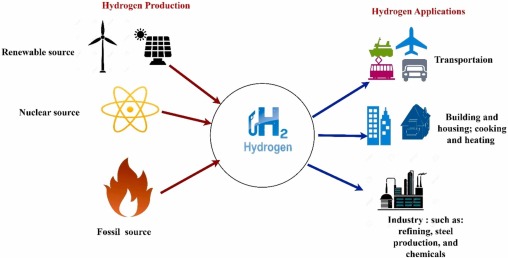Authors: Mohamed A. Habib, Gubran A.Q. Abdulrahman, Awad B.S. Alquaity, Naef A.A. Qasem
Publication Date: August 2024
Category: Hydrogen
Article Link: https://www.sciencedirect.com/science/article/pii/S1110016824005003
DOI: https://doi.org/10.1016/j.aej.2024.05.030
Abstract (Official):
The demand for fossil fuels is rising rapidly, leading to increased greenhouse gas emissions. Hydrogen has emerged as a promising clean energy alternative that could help meet future demands way sustainably, especially if produced using renewable methods. For hydrogen to meaningfully contribute to energy transitions, it needs more integration into sectors like transportation, buildings, and power that currently have minimal hydrogen usage. This requires developing extensive cross-sector hydrogen infrastructure. This review examines hydrogen combustion as a fuel by exploring and comparing production techniques, enriching ammonia with hydrogen as a CO2-free option, and hydrogen applications in engines. Additionally, a techno-economic environmental risk analysis is discussed. Results showed steam methane reforming is the most established and cost-effective production method at $1.3–1.5/kg H2 and 70–85% efficiency but generates CO2. Biomass gasification costs $1.25–2.20/kg H2 and pyrolysis $1.77–2.05/kg H2 offering renewable options. However, bio-photolysis currently has high costs of $1.42–2.13/kg H2 due to low conversion rates requiring large reactors. Blending H2/NH3 could enable carbon-free combustion, aiding carbon neutrality pursuits, but minimizing resultant NOx is crucial. Hydrogen’s wide uses from transportation to power underline its potential as a transformational energy carrier.


